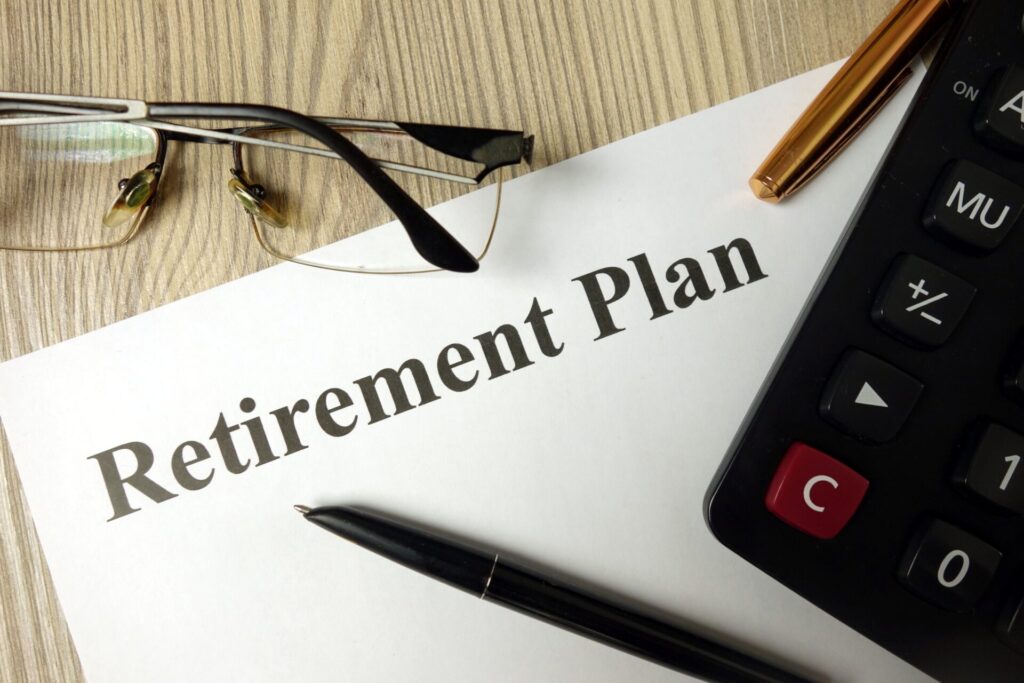Hey there! Are you a self-employed individual or small business owner looking to plan for your future and save for retirement? If so, then the Solo 401(k) plan might be the perfect solution for you!
A Solo 401(k) is a type of retirement plan specifically designed for individuals who own their own business and have no full-time employees besides themselves and their spouse. With a Solo 401(k), you get the best of both worlds – the tax benefits and investment options of a traditional 401(k), but with more control and flexibility.
In this article, we’ll dive into the rules and contribution limits for the Solo 401(k) in 2023. We’ll also touch on some of the benefits and advantages of this type of plan, as well as some common mistakes to avoid. By the end of this article, you’ll have a better understanding of the Solo 401(k) and whether it’s the right choice for you.
Alright, now that we’ve introduced the Solo 401(k), let’s dive into the rules and requirements for this type of plan.
First, let’s talk about who is eligible for a Solo 401(k).

A. Eligibility Requirements:
To be eligible for a Solo 401(k), you must be a self-employed individual or a small business owner with no full-time employees besides yourself and your spouse. This means that if you own your own business or are a freelance worker, you may be able to take advantage of the Solo 401(k) plan.
Additionally, you must be the only business owner and make all business decisions. You may also include partners, who are actively involved in the business and receive income from it, in the plan. It’s important to note that there are certain industries and businesses that are not eligible for a Solo 401(k), such as non-profit organizations and some types of partnerships. If you’re unsure about your eligibility, it’s best to consult with a financial advisor or tax professional.
B. Plan Details:
Once you’ve established that you’re eligible for a Solo 401(k), you’ll need to set up the plan. This includes creating a plan document that outlines the details of your plan, choosing a plan administrator to manage the plan, and selecting a trustee to oversee the plan’s assets.
Plan Details: Setting up a Solo 401(k) requires several steps to ensure you’re fully compliant with the IRS regulations.
Here’s a deeper dive into the process:
Plan Document:
A plan document is essentially a blueprint for your Solo 401(k) plan that outlines the key details, such as contribution limits, investment options, and distribution rules. It’s important to have a well-defined plan document in place to ensure you remain compliant with the IRS rules.
Plan Administrator:
A plan administrator is responsible for overseeing the day-to-day operations of your Solo 401(k) plan. This can either be you or a third-party administrator you hire. They are responsible for keeping track of contributions, calculating and making contributions, and preparing annual filings.
Trustee:
A trustee is responsible for managing the assets in the plan, including making investment decisions and overseeing distribution of funds. Like the plan administrator, this role can be filled by you or a third-party trustee.
It’s important to carefully consider who you want to fill these roles and make sure they have the knowledge and expertise to properly manage your Solo 401(k) plan. With the right team in place, you can be confident that your plan is well-managed and on track for your retirement.
C. Contribution Limits:
There are two types of contributions you can make to your Solo 401(k) plan: employee contributions and employer contributions. Employee contributions are made from your own income, while employer contributions come from your business’s profits. The contribution limits for 2023 will be outlined later in this article.
Whether you’re a small business owner or a self-employed individual, the Solo 401(k) could be the perfect way for you to plan for your retirement and take control of your financial future.
Let’s talk about the contribution limits for 2023.

Whether you’re a self-employed individual or a small business owner, it’s important to understand how much you can contribute to your plan each year to maximize your retirement savings.
A. Employee Contributions:
As an employee, you can make elective deferrals to your Solo 401(k) plan. This means you can choose to set aside a portion of your income each year to go into your plan. In 2023, the maximum contribution limit for elective deferrals is $19,000. If you’re over 50, you’re also eligible to make catch-up contributions of up to $6,000 in 2023, bringing your total contribution limit to $25,000. It’s important to note that the elective deferrals you make to your Solo 401(k) plan are tax-deductible, which can help lower your taxable income and potentially increase your tax savings. Making these contributions can also help you reach your retirement savings goals more quickly and with greater ease.
B. Employer Contributions:
As an employer, you can make profit-sharing contributions to your Solo 401(k) plan. The contribution limit for profit-sharing in 2023 is 25% of your net self-employment income, up to a maximum of $58,000. The combined contribution limit for both employee and employer contributions in 2023 is $63,000, or 100% of your net self-employment income, whichever is less.
It’s important to note that the employer contributions are discretionary, meaning they can change from year to year based on your business’s financial situation. Additionally, the profit-sharing contributions are tax-deductible, which can help lower your tax bill for the year. Employer contributions are also subject to certain vesting requirements, which dictate when you’ll have full ownership of the money in your Solo 401(k) plan. These vesting requirements can be either cliff vesting or graded vesting, and can vary depending on the plan administrator you choose. Be sure to carefully review the vesting requirements of your plan to fully understand when you’ll have access to your employer contributions.
C. Total Contribution Limit:
The total contribution limit for the Solo 401(k) in 2023 is $63,000, or 100% of your net self-employment income, whichever is less. This includes both employee and employer contributions, as well as catch-up contributions for those over 50.
The total contribution limit of $63,000 is not a fixed amount and may change in future years due to cost-of-living adjustments or other factors. Additionally, there are specific rules and limitations for determining your net self-employment income, which must be taken into account when calculating your contribution limit. It is always recommended to consult with a financial advisor or a tax professional to ensure that you are staying within the contribution limits and following all necessary rules and regulations.
Whether you’re just starting out with your business or you’re a seasoned entrepreneur, the Solo 401(k) can be a great way to save for your future and plan for retirement. Just make sure to keep these contribution limits in mind as you plan your contributions for the year ahead.
Let’s talk about some of the advantages of this type of plan.
Whether you’re a self-employed individual or a small business owner, there are a number of benefits to consider when choosing a retirement savings plan.
A. Tax Benefits:
One of the biggest advantages of the Solo 401(k) is the tax benefits. Contributions made to your plan are tax-deductible, which can help lower your taxable income and reduce your tax bill each year. In addition, any investment earnings within the plan grow tax-free until you withdraw them in retirement.
B. Tax-Deferred Growth:
The tax-deferred growth of your investment earnings within the Solo 401(k) is another major benefit. This means that you won’t have to pay taxes on any investment gains until you withdraw the money in retirement, when you may be in a lower tax bracket. This can help your investments grow faster and provide a larger retirement nest egg.
C. No Income Limits:
Another advantage of the Solo 401(k) is that there are no income limits for participation, unlike some other retirement plans. This means that regardless of your income level, you may be eligible to take advantage of the tax benefits and tax-deferred growth offered by the Solo 401(k).
D. Investment Options:
Another advantage of the Solo 401(k) is the investment options. With a Solo 401(k), you have a wide variety of investment options to choose from, including stocks, bonds, mutual funds, and more. This allows you to customize your investment portfolio to meet your personal goals and risk tolerance.
E. Loan Options:
Finally, the Solo 401(k) also offers loan options. If you need to borrow money for a big expense, such as a home purchase or a business investment, you can take out a loan from your Solo 401(k) plan. This can be a convenient and flexible way to access the funds you need, without having to sell your investments or pay taxes and penalties.
Whether you’re just starting out in your business or you’re a seasoned entrepreneur, this type of plan can be a great way to save for your future and take control of your retirement savings. With its tax benefits, investment options, and loan options, the Solo 401(k) is definitely worth considering.
Great! Here’s what you need to know about the process of getting started.

A. Choosing a Provider:
When it comes to setting up a Solo 401(k), the first step is choosing a provider. There are a number of providers out there, each with their own strengths and weaknesses. When selecting a provider, consider factors such as investment options, fees, customer service, and ease of use. Doing a comparison of different providers can help you make the right choice for your specific needs.
Some providers may have specific requirements or restrictions for Solo 401(k) plans, such as minimum account balance or required plan document preparation. Make sure to thoroughly research and compare providers to find one that best fits your needs and goals for your retirement savings. Additionally, it may be helpful to seek the advice of a financial advisor or tax professional to ensure you are making the best choice for your unique circumstances.
B. Setting Up the Plan:
Once you’ve selected a provider, it’s time to set up the plan. To do this, you’ll need to gather all the required documentation, such as your Social Security number, business information, and personal financial information. The provider will guide you through the process of setting up the plan, which may include filling out forms, submitting information online, or meeting with a representative.
Setting up a retirement plan typically involves providing the plan provider with personal and financial information to determine eligibility and best options for the plan. This may include documentation such as Social Security number, proof of business ownership, and financial information such as income and assets.
The provider will guide you through the process, which may include filling out forms, providing information online, or meeting with a representative in person. This can vary depending on the type of plan selected, such as a 401(k), Individual Retirement Account (IRA), or pension plan. The provider will assist in ensuring that the plan is set up according to legal requirements and regulations, and that contributions are made in a timely manner. It’s important to carefully review the plan’s terms and conditions before signing and to seek advice from a financial advisor if necessary.
C. Maintenance of the Plan:
Once your plan is set up, there are some ongoing responsibilities you’ll need to take care of. For example, you’ll need to file annual reports with the government to stay in compliance with regulations. In addition, as the plan sponsor, you’ll have fiduciary responsibilities to make sure the plan is being administered in the best interests of you and your employees.
With a little bit of research, some help from a provider, and a bit of patience, you’ll be on your way to a secure financial future in no time!
Alright folks, we’ve covered the ins and outs of the Solo 401(k) and how to get started.
But before you jump in, here are some common mistakes you’ll want to avoid.

A. Over-contributing to the Plan:
The Solo 401(k) has contribution limits, so it’s important to make sure you don’t over-contribute to the plan. Not only will you have to pay a 6% excise tax on the excess contribution, but you’ll also have to pay a 10% early withdrawal penalty if you take out the excess contribution before age 59 1/2.
Over-contributing to a Solo 401(k) plan can have serious consequences, including taxes and penalties. The contribution limits for the Solo 401(k) are set by the government and are designed to encourage individuals to save for retirement while avoiding excessive tax benefits.
If you exceed the contribution limit, you will be subject to a 6% excise tax on the excess amount, in addition to any regular income taxes that may apply. It is important to regularly monitor your contributions to the Solo 401(k) and make adjustments as needed to avoid over-contributing. You can consult with a financial advisor or tax professional for guidance on determining the appropriate contribution amount for your situation.
B. Failing to Set Up a Plan on Time:
If you’re self-employed or the owner of a small business, it’s important to set up your Solo 401(k) in a timely manner. Not only do you want to take advantage of the tax benefits, but you also want to make sure you’re on track for a secure financial future. As a self-employed individual or small business owner, you are responsible for setting up and funding your own retirement plan.
If you fail to set up a plan, you will miss out on the tax benefits associated with contributions to a Solo 401(k), such as a reduction in taxable income and potential tax deductions. Additionally, delaying the setup of a plan can result in missed opportunities for compound growth, which can have a significant impact on the amount of retirement savings you have available in the future.
It’s important to start the process of setting up a Solo 401(k) as soon as possible to ensure that you’re taking advantage of all the benefits and that you’re on track for a secure financial future. You can work with a financial advisor or retirement plan provider to determine the best plan options for your situation and to ensure that you meet all of the necessary requirements and deadlines.
C. Neglecting to Follow Annual Reporting Requirements:
Once you’ve set up your Solo 401(k), there are some annual reporting requirements you’ll need to keep in mind. Failing to do so could result in penalties, so make sure you stay on top of these obligations.
The Internal Revenue Service (IRS) and the Department of Labor (DOL) have established certain reporting and disclosure requirements for Solo 401(k) plans to ensure that they are operated in accordance with the law and that participants have access to important information about their plan.
Some of the common annual reporting requirements for Solo 401(k) plans include filing an annual Form 5500 with the DOL, providing participants with an annual summary of the plan’s financial condition, and distributing an annual statement of benefits to participants. Failing to meet these requirements can result in fines, penalties, and other administrative headaches.
It’s important to stay informed about the reporting requirements for your Solo 401(k) and to seek the assistance of a qualified professional if needed. A financial advisor or retirement plan administrator can help ensure that you are in compliance with all of the reporting and disclosure requirements and that your plan is running smoothly.
D. Improperly Classifying Employees:
If you have employees, it’s important to make sure you classify them correctly. Misclassifying employees could result in fines, so make sure you understand the rules and regulations when it comes to employee classification.
Improperly classifying employees as independent contractors instead of employees can have serious consequences for Solo 401(k) plan sponsors. The distinction between employees and independent contractors is important because it determines which workers are eligible to participate in the 401(k) plan and which workers must be counted in determining the employer’s contribution obligations.
Misclassifying employees as independent contractors can result in significant fines and penalties from the Internal Revenue Service (IRS) and the Department of Labor (DOL) for failing to properly withhold taxes and for failing to meet minimum coverage and nondiscrimination requirements for the 401(k) plan.
It’s important to understand the rules and regulations when it comes to employee classification and to seek the assistance of a qualified professional if needed. A payroll service provider or HR consultant can help ensure that you are in compliance with all of the relevant laws and regulations and that your employees are properly classified.
E. Not Taking Advantage of Catch-Up Contributions:
If you’re over the age of 50, you’re eligible to make catch-up contributions to your Solo 401(k). Don’t miss out on this opportunity to boost your retirement savings!
Not taking advantage of catch-up contributions can limit the amount of retirement savings you have available in the future. These catch-up contributions can provide a significant boost to your retirement savings and help you reach your financial goals faster.
For the tax year 2023, the catch-up contribution limit for Solo 401(k) plans is $6,000. This means that if you’re over the age of 50, you can contribute an additional $6,000 to your Solo 401(k) on top of the regular contribution limits. This can provide a valuable opportunity to increase your retirement savings and take advantage of the tax benefits associated with contributions to a Solo 401(k).
It’s important to consider making catch-up contributions if you’re over the age of 50 and to work with a financial advisor to determine the best strategy for reaching your retirement savings goals. A financial advisor can help you determine the best contribution options for your individual situation and ensure that you are taking advantage of all the opportunities available to you to boost your retirement savings.
By avoiding these common mistakes, you’ll be well on your way to taking full advantage of the benefits of the Solo 401(k). Good luck!
Well folks, we’ve reached the end of our journey through the world of Solo 401(k)s! We’ve covered the rules, contribution limits, and benefits of this retirement savings plan, as well as some tips on how to set it up and avoid common mistakes.
Ready to Plan for Retirement? A Wrap-Up of the Rules, Limits, and Benefits

Just to recap, if you’re self-employed or the owner of a small business with no full-time employees besides yourself and your spouse, you’re eligible for a Solo 401(k). The contribution limits for 2023 are $58,000 for employee elective deferrals and $19,000 for catch-up contributions for those over age 50. The profit-sharing contribution limit is 25% of compensation, and the combined contribution limit is $76,000.
Final Thoughts on the Benefits of the Solo 401(k) for Self-Employed Individuals and Small Business Owners:
The Solo 401(k) is a great option for self-employed individuals and small business owners looking to save for retirement. With tax benefits, investment options, and loan options, it offers a flexible and cost-effective way to plan for your financial future.
Importance of Avoiding Common Mistakes with Solo 401(k) Plans:
As with any financial plan, it’s important to avoid common mistakes and make sure you’re taking full advantage of the benefits. By staying on top of your annual reporting requirements, avoiding over-contributions, and making the most of catch-up contributions, you’ll be well on your way to a secure financial future.
If you’re self-employed or the owner of a small business, consider setting up a Solo 401(k) to take advantage of the tax benefits and investment options. And remember, avoiding common mistakes is key to making the most of this retirement savings plan.
Thanks for joining me on this journey, and here’s to a bright financial future!
Frequently Asked Questions
Q: Can a Solo 401(k) be set up at any time of the year?
A: Yes, a Solo 401(k) plan can be set up at any time of the year. However, it is important to remember that contributions for a given year must be made by the tax filing deadline, which is typically April 15th of the following year.
Q: Can a spouse participate in a Solo 401(k) plan?
A: Yes, a spouse can participate in a Solo 401(k) plan if they are a co-owner of the business. They are considered an employee of the business and are eligible to make elective deferrals and receive employer contributions.
Q: Is it possible to have employees in a Solo 401(k) plan?
A: No, a Solo 401(k) plan can only have the owner(s) and their spouse as participants. If the business has any full-time employees besides the owner and their spouse, they are not eligible to participate in the Solo 401(k) plan.
Q: What happens if the combined contribution limit is exceeded in a Solo 401(k) plan?
A: If the combined contribution limit is exceeded, the excess contribution must be withdrawn by the tax filing deadline, typically April 15th of the following year. The excess contribution will be taxed as ordinary income and may be subject to an additional 10% tax penalty.
Q: Are there any age restrictions for participating in a Solo 401(k) plan?
A: No, there are no age restrictions for participating in a Solo 401(k) plan. However, catch-up contributions are only available for those who are over age 50.
